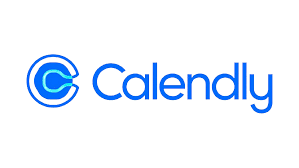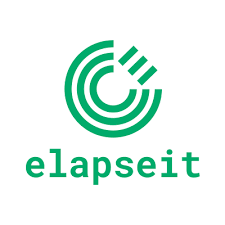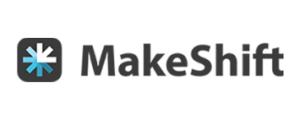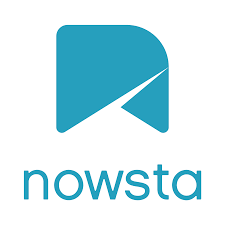What Is Employee Scheduling Software?
Employee scheduling software refers to platforms that focus on simplifying the process of managing work schedules for employees. Specifically, it helps automate the process and streamline the communication between employers and employees. Moreover, it enables companies to manage staff shifts, track the availability of their employees, and ensure efficient staffing levels to keep the company operational.
Generally, this software provides capabilities like shift swapping, drag-and-drop scheduling, and an automated notification system to keep employees on track with their schedules. An employee scheduling app also helps organizations by centralizing the scheduling process and enabling real-time visibility into workforce availability to optimize workforce management, improve productivity, and enhance employee satisfaction.
What Makes The Best Employee Scheduling App?
Ease Of Use For Managers
Ease of use is among the key factors prior to purchasing. From the manager's side, the best employee scheduling software should ensure efficient schedule management with minimal effort. Features that optimize this process include drag-and-drop capabilities, customized templates, and simplified interfaces. Moreover, automation and suggestions based on acquired data can make scheduling easier for managers.
Ease Of Use For Employees
Scheduling requires flawless communication between managers and employees. Through employee scheduling software, employees can have full access to their schedules, manage availability, and request time off with minimal effort. Furthermore, these platforms minimize the risk of staffing issues by providing reminders and notifications to end users in case of a sudden change in schedule. Ensuring seamless access to the tool, employee scheduling becomes an engaging activity.
Integrations And Exporting
Most companies use a combination of software for the majority of their operations. Especially in HR, there is a platform for every possible activity. For this reason, integration is an important factor to consider before buying an employee scheduling app. In the current market, most employee scheduling tools offer integration with other tools like HR, payroll, task management, and communication to perfectly align operations. These tools also provide exporting features in several formats—whether you prefer to work in Excel or present in PDF, employee scheduling software has got you covered.
Available As A Standalone App
Employee scheduling software is usually available as a standalone app. For the best tailored and seamless staff scheduling, you might want to look for a platform that focuses only on that to avoid unnecessary features and complex interfaces that might cause confusion. The trick is simplicity. Need employee scheduling? Find an app that does just that. Making it smooth, automated, and efficient will further simplify the process.
Basic Features Of Employee Scheduling Software
To some, staff scheduling might seem like a simple process, but that is not necessarily the case. In fact, several features on the market enhance employee scheduling, making it automated and simplified. In this section, we explore the basic features these tools have to offer.
Activity Dashboard
When it comes to staff management, the need for a complete overview of scheduling-related activities and valuable KPIs is important. Employee scheduling software with an activity dashboard allows employers and HR to monitor staff availability, changes, time-off requests, and task needs in one place. This leads to mitigated risks and a well-performing staff operation since even sudden changes are applied in a timely manner.
These dashboards also include real-time data and Key Performance Indicators that allow managers to improve scheduling. If the software comes with a customizable view of the dashboard, the data can be valuable for improving company operations.
Activity Tracking
As part of the dashboard, we previously mentioned the ability to track employee actions that directly impact scheduling. Employee scheduling software with activity tracking provides useful insights to the manager that help enhance the predictability of staff needs. Additionally, activity tracking provides transparency since it is accessible to employees as well. Thus, staffing becomes more efficient, and managers have a detailed overview of employee availability anytime and anywhere.
Alerts/Notifications
Like most platforms nowadays, there is employee scheduling software with alerts/notifications to alert both employees and managers of activities that affect employee schedules. Managers can receive notifications about time-off or shift requests, schedule conflicts, or various pending approvals. Meanwhile, employees get alerts about approved requests or sudden schedule changes.
Overall, this feature helps make the scheduling process precise and efficient. Both parties receive alerts about changes, and conflicts are resolved in a timely manner.
API
If you are aiming for integration with other platforms, you should look for employee scheduling software with API. This function allows you or your developers to integrate the platform with other software you use, which would further enhance the process. Such platforms can be other HR tools and employee engagement or workforce management systems.
API helps customize the system to your particular needs, as well. To be precise, it allows your developers to access the system for customization, improving flexibility in using the program and efficiency in staff scheduling.
Approval Process Control
Employee scheduling tools with approval process control ensure transparency and accountability, as managers are able to assign approval tasks to staff with the appropriate level of authority. Requests like time off, overtime, or shift changes are reviewed and approved in a centralized manner within the platform, ensuring that they comply with company policies and labor laws. With approval process control, companies can improve compliance, streamline operations, and strengthen communication between parties.
Attendance Management
Tracking is enhanced in employee scheduling software with attendance management. This feature enables management to track employee activities that affect scheduling efficiency. Such activities include clock-in and clock-out, absences, and even geolocation to ensure that company policy is met.
In addition, attendance management can assist payroll processes, as it tracks employee working hours accurately.
Automated Scheduling
Automation is vital for streamlining operations, saving resources, and boosting productivity. To that end, employee scheduling software with automated scheduling ensures efficiency at staffing level with minimal effort. The platform utilizes all data that affects scheduling and automatically creates the best possible schedule. Due to centralization in one platform, this software has access to data like skills, working hours, experience, and expertise to manage the scheduling process successfully. Moreover, automation saves managers and HR professionals time that can be spent on other important tasks that require the human factor.
Calendar Management
Calendar management is obviously important for employee scheduling. Specifically, employee scheduling software with calendar management provides employers and employees with a centralized platform to create, view, and edit staff schedules. This user-friendly feature makes scheduling easy and accessible to everyone in the organization. Not to mention, most of these tools also offer calendar customization, filters, and Google Calendar integration, which help tailor it to your company's requirements.
Communication Management
Staff schedule management requires flawless communication between employers and employees. Employee scheduling software with communication management enhances information accuracy in multiple ways, with notifications, messages, and email integrations being the most common. So, the danger of misunderstandings that lead to staff scheduling issues is minimized while information flows effortlessly.
Compliance Management
Employee scheduling tools with compliance management ensure that scheduling aligns with regulations, organizational policies, and labor laws. Also, most of these tools offer the ability to add company policies employees need to follow. During scheduling, the platform takes into account every policy and ensures compliance. Compliance management includes alerts and notifications whenever there is a regulation issue so that employees and employers can enjoy working in a fair and respectful environment.
Customizable Reports
Each company has its own requirements, needs, and goals, which is why tailored services are important. Employee scheduling software with customizable reports serves this purpose by allowing management to customize the report to their preference by using report templates and drag-and-drop interfaces. This feature strengthens data accuracy while providing flexibility and visualization capabilities. Eventually, these reports assist the scheduling process with accurate improvements based on the information gathered.
Data Import/Export
Data is a vital component of employee scheduling. Therefore, employee scheduling software with data import/export often comes at the top of the list. It offers the ability to import or export data in multiple formats and from several integrated apps. This enables management to transfer scheduling-related information both internally and externally. Ultimately, this leads to stronger data-driven scheduling decisions.
Employee Database
Knowing your employees is another important component of effective scheduling. Employee scheduling software with an employee database helps in achieving this goal. These databases operate as a warehouse that stores all the important information about your staff, like skills, expertise, experience, faculty, and availability. Hence, the employee database provides the right data to the algorithm in order to create the best possible schedule to meet the company's goals. Even in manual scheduling, managers can access the database, categorize employees, and find the right staff for a shift.
Forecasting
Employee scheduling software with forecasting utilizes available data to minimize the risk of overstaffing or understaffing. The data includes historical information, employee information, trends, and statistics, which combined can provide a forecast. Even though forecasting does not promise success, it can prevent issues by alerting employers in a timely manner. Moreover, forecasting is accurate in recurring operations, where changes are rare, and can provide resourceful suggestions.
Mobile Access
More and more of the corporate workforce is moving towards a mobile era. That is why it is important to consider employee scheduling software with mobile access. As the name indicates, this function enables both employees and managers to access tasks and information related to employee scheduling via their mobile devices. This enhances accessibility and allows flexible communication anytime and anywhere.
Multilocation
With remote work being at its peak, it is not uncommon for companies to employ staff in various locations. Employee scheduling software with multilocation features can be especially useful for large corporations since it allows managers to include information from multiple locations or branches in one platform. Therefore, scheduling utilizes information based on the needs and regulations of the department or branch. This unifying feature allows for the streamlining of the process, flawless communication, and risk mitigation despite the complexity of operating in multiple locations.
Online Time Clock
Tracking employee working hours is vital for multiple business functions, such as payroll, task management, and HR. Employee scheduling software with an online time clock simplifies the process by allowing employees to clock in and out online, using their own devices. This way, you can always check in real time your employees' availability and accurate working hours and ensure fair payroll, exact overtime, and punctual time-off requests.
Overtime Calculation
A fair payroll process depends heavily on the amount of employee working hours. Errors in this section can cause indignation and harm the relationship between management and the workforce. To that end, employee scheduling software with overtime calculation can save the day by automatically calculating overtime. Since most platforms have online clocking-in and -out systems, the software can automatically track overtime and add it to the payroll. This feature ensures proper scheduling, compliance with regulations, and accurate payroll calculation.
Real-Time Data
Time should be your ally when it comes to employee scheduling. A sudden change in this area can make your operations fall like a sandcastle. Employee scheduling software with real-time data becomes your assistant by showing you updated information about employee scheduling activities. Since the platform is online, it offers real time visibility on data related to working activities. In this way, managers can overview the processes in real time and prevent unpredicted issues.
Real-Time Updates
As mentioned before, it is vital for managers to be updated about the availability of their staff. That is why most employee scheduling software with real-time updates can help you stay informed about all scheduling-related company activities. Updates like shift swaps, schedule changes, and time-off requests arrive immediately on your device, and everything can be resolved quickly, avoiding unnecessary, unwanted outcomes. With real-time updates, employees are also informed about their pending requests, boosting their morale. Generally, this feature strengthens communication, improves transparency, and motivates employees to be even more productive.
Reminders
Part of being proactive is knowing about upcoming activities. Employee scheduling software with reminders informs both employees and managers of every known activity that might affect scheduling. Reminders can come in different forms, depending on the user and the preferred device. They can be notifications, emails, or even SMS, making sure that the user receives them at the appropriate time. Such reminders can help prevent scheduling conflicts and understaffing situations, thus improving morale and productivity.
Schedule Distribution
It is important for employees to receive their schedule as early as possible. That leaves them enough time to plan the day out and save time and resources. Therefore, employee scheduling software with schedule distribution can come in handy for both parties. This feature makes the distribution process easier, faster, and more efficient by delivering it in the most appropriate format for employees to view. Eventually, this reduces confusion and schedule distribution delays, leading to higher productivity.
Self-Service Portal
Every employee should be able to access and manage every activity that affects their schedule. Bearing this in mind, employee scheduling software with a self-service portal offers employees the ability to manage their scheduling. This portal often has a user-friendly interface containing employee preferences and information, such as availability, preferred dates, skills, expertise, overtime, and time-off requests. It allows flawless communication between employees and employers, making the scheduling process seamless and accessible. Last but not least, it improves flexibility and enhances accountability by granting employees some autonomy over their schedules.
Shift Swapping
One of the biggest challenges for corporations with shift-based staff is shift swapping. One misstep during the swap can lead to delays and resource loss. However, employee scheduling software with shift swapping mitigates that risk. With this feature, employees can access and request shift swapping when necessary and contact other employees directly. Employees and managers can then receive notifications immediately about the shift change request and address it in a timely manner. This eliminates the risk of staff issues and holds employees accountable for their shift-swapping requests.
Sick Leave Tracking
Another factor that directly affects scheduling is sick leaves. Employee scheduling software with sick leave tracking allows employers to track employees during their sick leave. This is not about monitoring sick leaves due to a lack of trust but about any scheduling issues due to the absence. With this feature, managers can acknowledge the expected date of returning employees and handle scheduling appropriately. Also, it allows them to access and approve sick leave requests while following labor laws, regulations, and company policy.
Task Scheduling
Part of successful scheduling is assigning the right tasks to the right people. Employee scheduling software with task scheduling allows managers and HR pros to analyze tasks and assign them to the right employees. At the same time, it provides the ability to create tasks and monitor their status to increase efficiency. In general, task scheduling is integral to the software.
Timesheet Management
Another handy way to track employee working hours is via timesheets. Employee scheduling software with timesheet management is not rare in the market. This feature allows HR departments to create, manage, edit, and approve requests directly on a timesheet. Particularly for scheduling, timesheet management can streamline the process by making it accessible and fast for both parties. Apart from scheduling, timesheets can also assist other processes like payroll, overtime, and compliance with regulations.
Vacation/Leave Tracking
Similarly to the previously mentioned sick leave tracking, it is important for managers to know when employees are unavailable. Employee scheduling software with vacation/leave tracking allows employers to manage their staff's vacation balance. Meanwhile, it grants employees the ability to submit their time-off requests directly to their managers. This is not only more efficient but also direct and fast since the management will get an immediate notification about the request and respond accordingly. Additionally, the schedule is updated automatically based on the vacation.
The Benefits Of Using Employee Scheduling Software
Multiple benefits of using employee scheduling software depend on factors like company size, industry, and goals. The following section presents the benefits that most companies share across industries.
Prevents Scheduling Conflicts
There are several potential conflicts in scheduling that can be caused by human error. When manually planning staff working hours, there is always the possibility of miscalculating overtime, vacation, and time off, which may lead to overstaffing or understaffing and directly affect company resources.
How does an employee scheduling tool help prevent such conflicts? By centralizing the process into one platform, the software takes into account every possible factor that may affect scheduling before proceeding. This way, you can predict and prevent conflicts in a timely manner. Not to mention, last-minute adjustments have a lower chance of negatively impacting company schedules.
Valuable Time Saved
One of the important benefits of employee scheduling software is that it takes the burden off management teams and HR. Recurring tasks and processes that can be carried out accurately by the system usually take managers a lot of time. Hence, automation in scheduling allows managers to focus on other important tasks that require the human touch.
Even using an employee scheduling app requires minimal effort. The interactive interface, drag-and-drop features, and templates help streamline the process, saving valuable time. The less managers focus on using the software, the more issues they can solve elsewhere within the organization.
Automates Time-Off Management
Automation is one of the reasons organizations choose to use employee scheduling software. This software can be of huge benefit, especially in time-off management. When employees submit time-off requests, the platform immediately checks if there is a potential conflict in the schedule and if the request is doable. Then, the manager can quickly check the request and approve or deny it.
Time off also affects payroll. The automated time-off management of employee scheduling software helps resolve issues in this section, too, by calculating the payroll immediately upon the approval of the request. So, it helps track leave balances and ensure that the time off follows company policy and regulations.
Enhances Employee Experience
So far, we have mostly mentioned the benefits employers enjoy by using employee scheduling software. However, there are numerous benefits for employees, as well. Many of the software's features, like automation, a self-service portal, mobile access, online time clock, and time-off management, focus on improving employee experience. Successful implementation of these functions will make employees feel more comfortable and involved in company activities. Further down the road, healthy usage of the software may contribute to a flexible, transparent environment with improved work-life balance and happy employees.
Improves Payroll Accuracy
An accurate payroll process requires all the data to be analyzed correctly. When done manually, the risk of miscalculation is high. Vacation budget, sick leaves, and overtime are a few factors that complicate the process. To that end, the automation that employee scheduling software offers can analyze a massive amount of data accurately and calculate employees' working hours. Most of the tools also offer integrations with payroll systems to make the operation even smoother. Since all data is taken into account, the payroll process gains further accuracy. This boosts employee morale, productivity, and accountability.
Strategic Staffing
Planning and allocating resources appropriately can be tricky. Each operation has its own requirements, while every employee has a unique set of skills and certain availability. Employee scheduling software's ability to access and analyze this information prior to employee scheduling improves strategic staffing. Based on employee data and task requirements, the software can provide an optimized schedule focusing on maximum potential. This helps companies achieve more with less.
Reduced Labor Costs
Directly connected to strategic staffing, employee scheduling tools help you control labor costs. The automated scheduling system can allocate staff optimized for efficiency. Therefore, by analyzing historical data, availability, and skills, the software can forecast the amount of staff required for each operation, minimizing overstaffing and overtime while meeting goals. Additionally, since the process is automated, valuable time is saved, and administrative costs decrease.
Better Communication
Having a centralized platform for every scheduling-related activity makes communication easy. Messaging, alerts, notifications, and reminders are among the features employee scheduling software utilizes to enhance communication. The management team can address employees directly about scheduling while the latter can express concerns and submit requests on the same platform. At the end of the day, improved communication mitigates the consequences of last-minute requests or schedule changes. In the meantime, employees feel included, which boosts morale and productivity.
Performance Management
To manage performance successfully, you need to access all the information that directly affects it. Doing this manually and via multiple programs may offer a false overview. However, centralized employee scheduling platforms help managers access all stored information that affects performance. Meanwhile, these tools have integrated time-tracking features that also help manage staff performance. Generally speaking, employee scheduling software improves accountability, efficiency, and transparency in the workplace, making life easier for both employees and managers.
Compliance With Scheduling Laws
Complying with labor laws and scheduling regulations is vital for every company. Failing this can have a seriously negative impact. Employee resignations, penalties, and bans are among the many noncompliance consequences. Employee scheduling software helps organizations comply with scheduling laws by maintaining a database of regulations and optimizing the scheduling process accordingly. In addition, alerts can be sent to both parties if these regulations are not met at any point. So, not only does the software help with compliance, but it can also prevent relevant issues in the future.
Employee Scheduling Software Deployment Options
In the employee scheduling software market, there are five common deployment options that are widely available. Let's list them below.
Desktop Application
You can always pick employee scheduling software with a desktop application if you need it on your computer. Applications may even be accessible via multiple devices.
Mobile Application
Nowadays, most tasks happen on the go, so you may need employee scheduling software with a mobile application. This solution lets you install the application on your mobile devices and access it anytime.
Self-Hosted Cloud-Based
A combination of the two previously mentioned deployment options. Self-hosted cloud-based employee scheduling tools are hosted on the cloud/server. This can also be a third party. Control and accessibility are their most notable advantages.
Self-Hosted System
Employee scheduling software with a self-hosted system requires downloading. With this option, the user is responsible for manually updating it. You can choose this method if a more customizable option fits your business goals.
Software As A Service/Cloud
Employee scheduling software that is hosted on the cloud. This type of deployment requires no downloading since everything is hosted on a remote server. The employee scheduling vendor is responsible for maintaining the system, updating it, and providing assistance for end users to access it. As a result, security, accessibility, and scalability increase. The only downside is that these systems are usually non-customizable when it comes to branding.
Which Businesses Can Leverage Employee Scheduling Software?
Overall, any business with staff can utilize employee scheduling software. The market for these tools expands from freelancers all the way to large corporations. Here we present the most common users of staff scheduling platforms.
Academic
With such large staff in academic institutions, employee scheduling software can help them manage the working hours of teachers and anyone who works in education.
Freelancers
Freelancers can also make use of an employee scheduling tool. Whether they work alone or in teams, the software can track working hours and allow transparent collaboration between freelancers and customers.
Large Enterprises
Large enterprises require a vast amount of staff, often in multiple locations. This makes the scheduling process quite demanding and difficult. In this scenario, employee scheduling software promises to eliminate the risk of overstaffing and understaffing.
Nonprofits
Nonprofit organizations also have staffing requirements and may face issues. Since their staff is usually not paid, they often lack a standard schedule. That holds some risk of understaffing since the schedule can frequently change. That said, employee scheduling software can help mitigate these risks.
Public Administration
The public sector is the best example of an organization with a large staff. Like large enterprises, it faces similar issues and requires an employee scheduling tool to minimize risks.
Small/Medium Businesses
Despite having fewer employees, small and medium businesses can face employee scheduling issues. The danger here is that there is no stable replacement in case of a sudden scheduling change. Thankfully, employee scheduling software can increase the efficiency of staffing and scheduling.
Pricing Models For Employee Scheduling Software
Free
First off, there is free employee scheduling software. This type of software usually offers its basic features for free, while a more advanced version might require a fee.
Free Trial
Employee scheduling software with a free trial is also available on the market. Companies that choose this model can access the full software for free for a limited period to test it out and then can decide whether to continue using it as a paid version.
Freemium
Freemium is another pricing model advancing in the market. Employee scheduling software with a freemium model offers much of the service for free, while some advanced features can be accessed at a later stage for a fee.
One-Time Purchased License
You can also avoid the headache of paying monthly/yearly fees by opting for employee scheduling software with a one-time purchased license. With this model, you can pay the full price once without having to worry about future fees.
Subscription
Employee scheduling tools with subscriptions are common in the market. By choosing this model, there is a monthly/yearly subscription fee to pay to access the tool's full service.
List Of Licensing Options For Employee Scheduling Software
Free
In the market there are plenty of options for employee scheduling software with free licensing, where you will not have to pay fees to use the software. The downside, however, is that it requires some coding expertise since this option offers limited customer support. For this reason, you should have a team of developers or an IT department to back you.
Open-Source
Open-source is the best option for companies with their own IT department. Typically, open-source employee scheduling tools are hosted online and provide full access to their code. They allow customers to fully customize the service and match it to their goals.
Paid
This is the classic pay-to-use model. Employee scheduling software with paid licensing includes the full service for a fee. Some providers request monthly or yearly subscriptions, while others offer one-time payment options.
The Future Of Employee Scheduling Software
It is safe to assume that employee scheduling will become much easier in the future. Software utilizing data-analyzing technologies will be able to predict situations and manage schedules accordingly. This will lead to more flexible scheduling, where employee satisfaction will be taken into consideration. The process will become more transparent, allowing employees to view staffing needs on certain occasions and even pick their schedules themselves. Additionally, using their smartphones, employees and employers will be able to access the software anytime and anywhere. In general, employee scheduling will become sufficient in the future, reducing understaffing and overstaffing issues.
Considerations When Purchasing Employee Scheduling Software
Opt For A Tool With An Employee Portal
Transparency and efficiency in communication are vital in employee scheduling. That is why you should always opt for a tool that allows employees to access their schedules. An employee portal allows employees to manage their work schedules, access important information, and view the company's staff needs. This way, communication between managers and employees is streamlined and transparent, making the scheduling process as efficient as possible.
Check Compliance Management Options
Ensuring compliance with labor laws and regulations is a necessity for every company. Hence, checking the compliance management options before buying an employee scheduling tool is important. Specifically, look for features and capabilities that will help you track or enforce compliance with regulations. These might include calculations for overtime work hours, integrated scheduling rules, and even labor law alerts. Following this path can minimize the risks of legal issues and penalties. Eventually, compliance ensures a just and pleasant workplace.
Consider Multilocation Support
Many businesses nowadays operate in multiple locations, either because of remote workers or dispersed offices. Whatever the reason, the need for multilocation support when it comes to employee scheduling platforms has increased. Such a feature will allow your management team to schedule staff in different locations, departments, and branches. Meanwhile, the platform will consider each location's different needs and regulations and allocate staff accordingly. In the end, the employee scheduling process becomes more efficient and accurate for every department.












